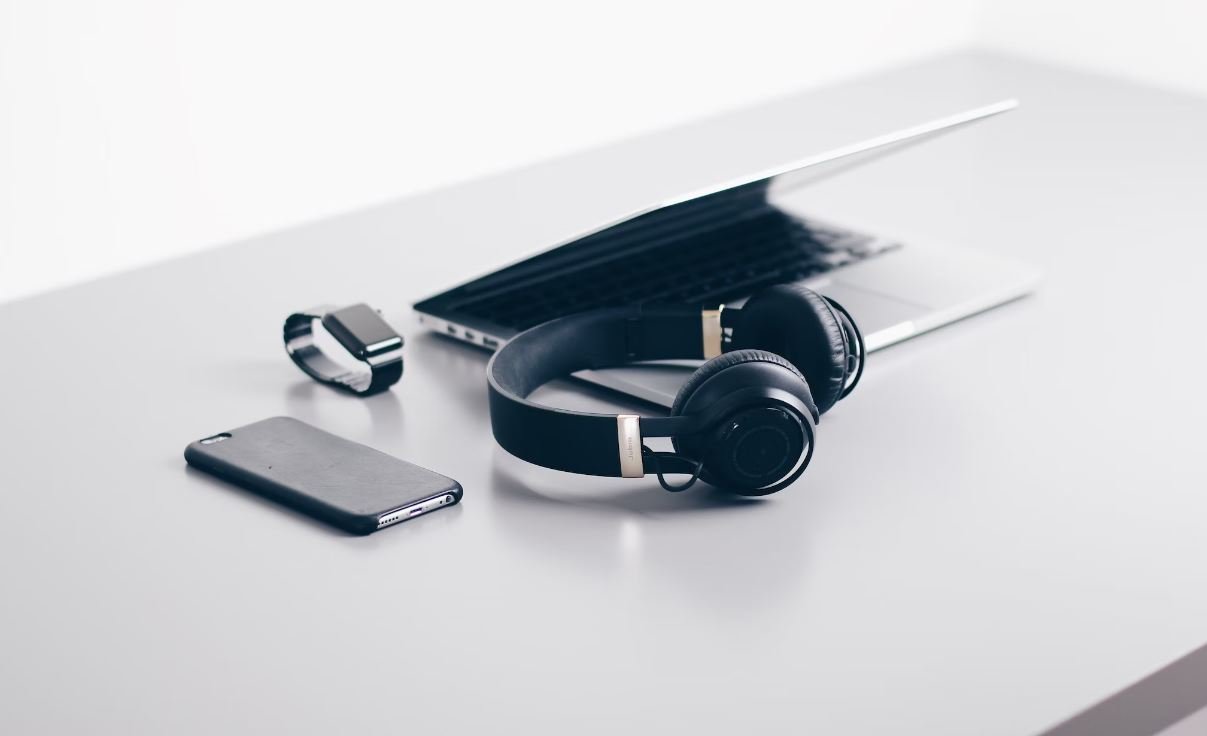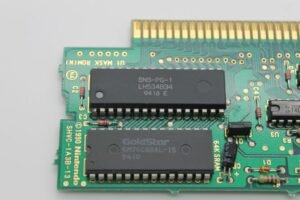Music Keyboard
A music keyboard, also known as a piano keyboard, is a versatile musical instrument that plays a crucial role in various music genres. It consists of a set of keys, typically made of wood or plastic, arranged in a specific pattern and connected to sound-generating mechanisms.
Key Takeaways
- A music keyboard is a versatile musical instrument used in various music genres.
- It consists of a set of keys arranged in a specific pattern.
- The sound is generated by mechanisms connected to the keys.
**The keys on a music keyboard are organized in a repeating pattern of white and black keys**. The white keys represent the natural notes (A, B, C, D, E, F, and G), while the black keys represent the sharps and flats (the black keys are sometimes referred to as accidentals). **These keys are arranged in groups of two and three, repeating across the keyboard**. This pattern of keys is known as an octave. Each octave consists of seven white keys and five black keys. The arrangement of the keys allows musicians to play different scales and create melodies and harmonies. *Learning to navigate the pattern of keys is essential for playing the keyboard proficiently*.
The music keyboard can come in various sizes, from small portable keyboards to grand pianos. The size and number of keys may differ depending on the type of keyboard. For example, a standard piano keyboard consists of 88 keys, while smaller keyboards may have as few as 25 keys. The keys are typically made of materials such as plastic or wood, and they have varying levels of touch sensitivity. **Touch sensitivity refers to the keyboard’s ability to respond to the player’s touch, allowing for dynamic expression in the performance**.
The music keyboard is a versatile instrument that can produce different sounds and tones depending on how it is played. It can be used to play melodies, chords, and even complex musical arrangements. **One interesting feature of some keyboards is the ability to replicate the sound of other instruments, thanks to built-in samples and sound synthesis technology**. This allows musicians to create entire compositions using just the keyboard, without the need for additional instruments or recording equipment.
Types of Music Keyboards
There are different types of music keyboards suited for different purposes and skill levels. Here are some popular types:
- Portable Keyboards: Compact and lightweight keyboards designed for easy transportation.
- Digital Pianos: Designed to closely mimic the sound and feel of an acoustic piano.
- Synthesizers: These keyboards specialize in creating and manipulating electronic sounds.
Advantages of Using a Music Keyboard
- Portability: Portable keyboards allow musicians to practice and perform anywhere.
- Versatility: Keyboards can produce a wide range of sounds, making them suitable for various music genres.
- Learning Tool: Keyboards are often recommended for beginners due to their easier learning curve compared to other instruments.
Common Keyboard Accessories
When using a music keyboard, there are various accessories that can enhance the experience. Some popular accessories include:
- Keyboard Stand: Provides a stable platform for the keyboard during performances.
- Sustain Pedal: Allows the player to sustain notes for an extended period.
- Keyboard Cover: Protects the keyboard from dust and debris when not in use.
| Number of Keys | Type of Keyboard |
|---|---|
| 25-49 | Mini Keyboards |
| 61-76 | Portable Keyboards |
| 88 | Digital Pianos |
The music keyboard has evolved over the years, integrating new technologies and features to enhance the playing experience. From touch-sensitive keys to advanced sound customization options, today’s keyboards offer a wide range of possibilities for musicians. Whether you’re a professional pianist or a beginner exploring the world of music, a music keyboard is an instrument worth exploring.
So why wait? Dive into the world of music and master the art of playing the keyboard. *Unleash your creativity and express your emotions through the enchanting sound of the music keyboard*.

Common Misconceptions
Misconception 1: Playing the keyboard is easy
- Playing the keyboard requires practice and dedication
- It takes time to develop finger dexterity and coordination
- A lot of effort goes into learning scales, chords, and music theory
Misconception 2: Only highly talented individuals can play the keyboard
- Anyone can learn to play the keyboard with proper instruction and practice
- Talent may speed up the learning curve, but it is not a prerequisite
- With commitment and perseverance, even beginners can become skilled keyboardists
Misconception 3: Keyboards are only good for playing classical or traditional music
- Keyboards are versatile instruments that can be used in various genres
- They are commonly used in pop, rock, jazz, and electronic music
- Modern keyboards offer a wide range of sounds and effects for different musical styles
Misconception 4: Playing the keyboard is a solitary activity
- Keyboardists often collaborate with other musicians and play in bands or ensembles
- Playing in a group enhances musical skills and allows for creativity and improvisation
- Keyboard players can also participate in jam sessions or join a music community
Misconception 5: Electronic keyboards are the same as pianos
- Electronic keyboards may have similar keys to pianos, but they operate differently
- Keyboards often have built-in features like pre-recorded sounds and rhythms
- Pianos, on the other hand, have a more acoustic and expressive touch

Introduction
In this article, we will explore various fascinating aspects of music keyboards. These tables provide interesting data and information related to different aspects of music keyboards. From the number of keys on keyboards to the history of the instrument, each table sheds light on a unique aspect of this integral part of modern music.
Types of Keyboards
Music keyboards come in various types. This table showcases the different types of keyboards available today and their respective features.
| Keyboard Type | Features |
|---|---|
| Grand Piano | 88 weighted keys, accurate sound emulation |
| Electronic Keyboard | Variable number of keys, built-in rhythms and voices |
| Synthesizer | Sound manipulation, extensive sound bank |
| Digital Piano | Weighted or semi-weighted keys, realistic piano sounds |
Number of Octaves on Keyboards
Octaves play a crucial role in music keyboards as they determine the range of notes available. This table shows the number of octaves typically found on various types of keyboards.
| Keyboard Type | Number of Octaves |
|---|---|
| Grand Piano | 7.33 |
| Electronic Keyboard | 5 |
| Synthesizer | 4 |
| Digital Piano | 6.5 |
Key Weighting on Keyboards
The weighting of keys influences the feel and playability of keyboards. Here, we compare the key weighting options found on different types of keyboards.
| Keyboard Type | Key Weighting |
|---|---|
| Grand Piano | Heavy hammer action |
| Electronic Keyboard | Non-weighted |
| Synthesizer | Semi-weighted |
| Digital Piano | Weighted or semi-weighted |
Keyboard Size Comparison
Keyboards come in various sizes, ranging from compact to full-size. This table highlights the size comparison of different keyboard types.
| Keyboard Type | Dimensions (in cm) |
|---|---|
| Grand Piano | 152 x 131 |
| Electronic Keyboard | 89 x 30 |
| Synthesizer | 95 x 35 |
| Digital Piano | 137 x 40 |
Keyboard Manufacturers
Various companies specialize in manufacturing music keyboards. This table showcases some of the prominent keyboard manufacturers and their popular models.
| Manufacturer | Popular Model |
|---|---|
| Roland | RD-2000 |
| Korg | Kronos |
| Yamaha | Clavinova |
| Casio | Privia |
Keyboard History Timeline
The history of music keyboards is rich and full of innovations. This table presents a timeline showcasing major events and advancements in the evolution of keyboards.
| Year | Event |
|---|---|
| 1700 | Invention of the piano by Bartolomeo Cristofori |
| 1790 | Invention of the damper pedal |
| 1874 | First commercially successful typewriter |
| 1964 | Introduction of the Moog synthesizer |
Keyboard Accessories
Several accessories enhance the functionality and experience of playing a music keyboard. This table highlights some popular accessories and their purposes.
| Accessory | Purpose |
|---|---|
| Keyboard Stand | Supports the keyboard at a comfortable playing height |
| Expression Pedal | Controls volume or other parameter changes |
| Headphones | Allows for private practice and minimizes external noise |
| Dust Cover | Protects the keyboard from dust and debris |
Keyboard Prices (Average Range)
The price range of keyboards can vary significantly. This table presents the average price range of different types of keyboards.
| Keyboard Type | Average Price Range (USD) |
|---|---|
| Grand Piano | 10,000 – 100,000 |
| Electronic Keyboard | 100 – 1,500 |
| Synthesizer | 500 – 4,000 |
| Digital Piano | 1,000 – 5,000 |
Conclusion
In conclusion, music keyboards hold a significant place in the world of music. They come in various types and sizes, offer different features and capabilities, and have a rich history of innovations. Whether you are a professional musician or an aspiring learner, understanding the nuances and characteristics of keyboards helps in choosing the perfect instrument for your musical journey.
Frequently Asked Questions
What are the different types of music keyboards available?
There are several types of music keyboards, including digital pianos, synthesizers, MIDI controllers, and portable keyboards.
What is the difference between a digital piano and a keyboard?
A digital piano is designed to replicate the sound and feel of an acoustic piano, while a keyboard may offer a wider range of sounds and features for creating music.
Can I connect a music keyboard to my computer?
Yes, many music keyboards can be connected to a computer via USB or MIDI cables, allowing you to record and control virtual instruments or music software.
Do I need to know how to read sheet music to play a music keyboard?
While knowing how to read sheet music can be helpful, it is not a requirement for playing a music keyboard. Many keyboards provide visual aids such as LED lights or instructional modes to assist beginners.
How many keys should a music keyboard have?
The number of keys on a music keyboard can vary. A standard piano keyboard has 88 keys, while some portable keyboards may have as few as 25 keys. The number of keys you need depends on your playing style and musical goals.
What is the difference between weighted and non-weighted keys?
Weighted keys have a similar feel to those of an acoustic piano, offering resistance when pressed. Non-weighted keys are lighter and more responsive, making them suitable for certain genres and playing techniques.
Can a music keyboard produce different instrument sounds?
Yes, many keyboards come with a variety of built-in sounds, including piano, organ, strings, synth, and more. Some keyboards also allow you to download or create your own custom sounds.
What is MIDI, and how does it relate to music keyboards?
MIDI (Musical Instrument Digital Interface) is a protocol that allows electronic music devices, including keyboards, to communicate with each other. It enables you to control and synchronize multiple instruments, record and playback performances, and much more.
Can I use headphones with a music keyboard?
Yes, most music keyboards have a headphone output, allowing you to practice and play silently without disturbing others.
Do music keyboards require batteries or external power?
It depends on the model. Some keyboards can be powered by batteries, while others require an external power source. Most digital pianos and professional keyboards come with built-in power supplies.




